In today’s competitive B2B landscape, customer loyalty is not simply about offering rewards or discounts. It's about delivering personalized experiences that resonate with each customer’s unique needs and preferences. To achieve this, businesses must move beyond one-size-fits-all approaches and create interactions that feel bespoke, relevant, and timely.
However, this raises a critical question: How do we efficiently and cost-effectively tailor interactions to individual behaviors and interests while engaging customers at scale?
Personalization at scale requires a blend of sophisticated technology and skilled execution. In our recent blog post, Using Salesforce for B2B Loyalty Programs: Getting your data and team in order, we discussed two important challenges to launching a successful B2B customer loyalty program: data management and organizational alignment.
In this article, we’ll focus on two additional challenges that often stand in the way of this goal: the limitations of legacy platforms and the gaps in technology and skills that can hinder effective personalization and automation. We’ll also explore how Salesforce technology can help overcome these challenges, enabling businesses to drive personalized, automated customer engagement that fosters loyalty.

Why automation and personalization matter
In B2B sales, building and maintaining strong customer relationships is essential, but without modern enterprise CRM solutions and tools, it can be a timely, complex task. When scaled well, loyalty programs can take pressure off sales reps by extending their reach and meeting their customers where they are and on their time. By building automation and personalization into loyalty programs, businesses can ensure that customer interactions are not only efficient but also highly relevant, helping reps to engage customers more effectively and consistently throughout the sales cycle.
When a foundational data layer is established, it will power personalization that transforms generic loyalty programs into meaningful customer journeys. It ensures that every touchpoint—from email to customer support—is aligned with the customer's business objectives. Using data to inform personalization strategy can significantly enhance customer satisfaction and drive long-term loyalty.
Marketing automation enables businesses to manage these personalized interactions at scale. By automating repetitive tasks and workflows, companies can maintain consistent, timely communication with their customers without overwhelming their marketing teams. This not only boosts efficiency but also allows for real-time responses to customer actions.
However, automation is only as effective as the data driving it. Understanding your organization’s data and how to manage it across the customer journey is crucial to optimizing processes with automation. When your data is well-managed, it can be used to increase the responsiveness of your automated processes and their ability to adapt in real time to customer behaviors and preferences. The benefits are compounded when AI-powered data models and predictive analysis help generate actionable insights and trigger automated actions based on customer needs. This is where the modern CRM tools and processes come into play.
Overcoming the challenges of legacy platforms with Salesforce
If your team is ready to launch a cutting-edge loyalty program, ask yourself if you have the technology in place to connect the dots across sales, marketing, and service so you can track customer behavior in real time and deliver the personalized experiences you’re trying to achieve. For many of our customers, the answer is no, their older systems just can’t keep up.
Legacy technologies can be harder to integrate because they often involve siloed systems with limited compatibility, outdated architecture, and lack of APIs or open frameworks. This makes it challenging to consolidate customer data and creates friction when trying to automate and personalize customer journeys across multiple touchpoints. Without seamless integration, you may face inefficiencies, inconsistencies in customer experiences, and an inability to scale loyalty programs effectively.
We’ve helped clients face these exact challenges by introducing them to the Salesforce ecosystem – specifically Data Cloud as the central point to bring this all together. As your loyalty program matures, ensuring seamless integration and ability to layer on additional capabilities is crucial to evolve and meet your customers’ needs. Products such as Marketing Cloud, Sales Cloud, and Service Cloud each bring unique capabilities for your loyalty programs and can be started or layered on in any order with Data Cloud. Data lives and flows between clouds seamlessly and is activated through Data Cloud with pinpoint accuracy, allowing you a 360-degree view of your customers in real time.
For example, if a customer interacts with your marketing email (Marketing Cloud), that data is immediately accessible to your sales team in Sales Cloud, allowing them to follow up with a personalized offer. At the same time, if the customer contacts support (Service Cloud), the agent can see all previous interactions and tailor their response accordingly. This seamless flow of information is powered by Data Cloud and means your teams can deliver consistent, personalized experiences at every stage of the customer journey without hitting the usual roadblocks that legacy systems create.
Bridge the skills gap
Even with modern platforms, businesses may struggle if they lack the expertise required to properly deploy these tools. Without the right strategy, companies may be unable to leverage the full potential of their technology and as a result loyalty programs may suffer. It’s important to align resources with the right platform so that the platform is not implemented sub-optimally or with an overly technical approach. This leads to another Salesforce differentiator, which is that it offers low-code and no-code solutions for implementation. Using standard and out-of-the-box functionalities are always the first methods of implementation. But in general, we recommend cultivating or acquiring skills in several areas:
- CRM proficiency: Expertise in CRM platforms (such as Salesforce) is needed to integrate data, automate campaigns, and track customer interactions
- Automation and workflow design: Teams need skills in designing workflows, automating processes, and leveraging tools to create dynamic, personalized customer journeys
- Data analytics: Skills in data analytics and reporting tools are needed to track program performance, understand customer behavior, and continuously optimize the loyalty experience
- API and integrations: Knowledge of APIs and system integrations helps ensure that customer data flows seamlessly across platforms and that new technologies work smoothly with existing infrastructure
By building a team with these domain and technology skills, companies can ensure that their loyalty programs are well-designed, data-driven, and scalable.
Conclusion
In addition to data management and organizational alignment, legacy platforms and skill shortages are significant obstacles to modernizing B2B customer loyalty programs. Only with the right technology and a commitment to upskilling teams can businesses create automated, personalized experiences that keep customers coming back.
Whether you need help integrating data for a 360-degree customer view, designing workflows that automate your program, or analyzing and monitoring program performance, the OneMagnify team has the skills and expertise to help you build and grow your loyalty program. For clients using Salesforce, you have a powerful suite of tools that provides the flexibility and intelligence needed to fuel successful loyalty programs in today’s digital-first world. We’re here to show you how.


